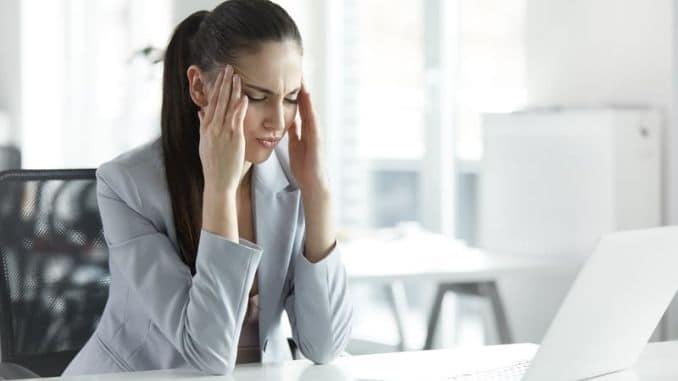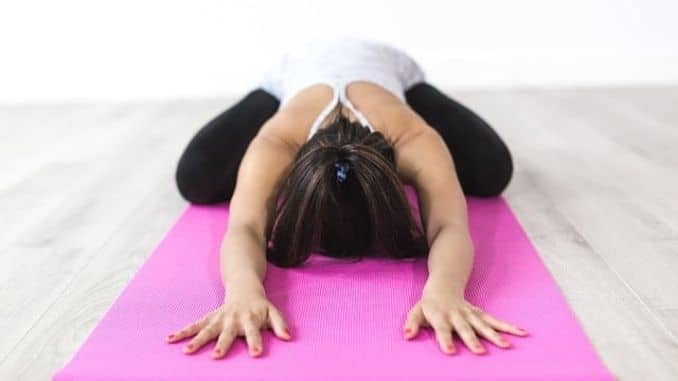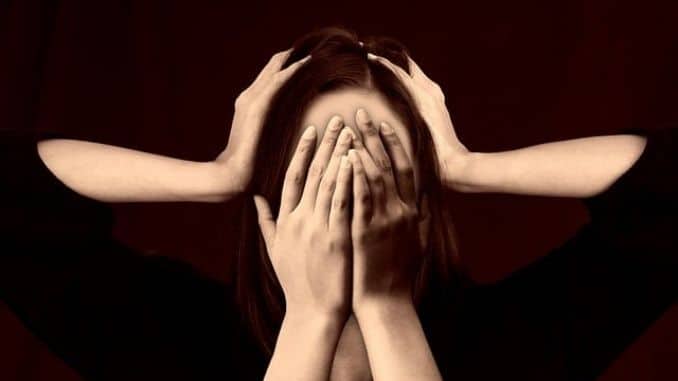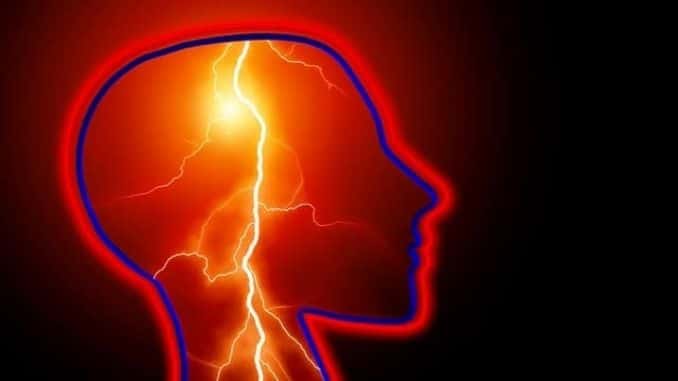
Lauren shut her door and sat down at her desk. Closing her eyes, she rubbed her head. It was another headache, and it was only Wednesday. She pulled the aspirin bottle out of her drawer and stared at it. She was taking too many, and she didn’t like it, but she had to get through the rest of the workday somehow. She swallowed the little white pill and wondered: Is there no better solution?
The World Health Organization (WHO) estimates headaches affect about half of people worldwide, with 30 percent or more suffering from regular migraines. In 2015, migraines and severe headaches were the fifth leading health complaint among people around the world. In the United States, more than 15 percent of all adults suffered from them. Women are more than twice as likely as men to have to deal with them and often have to miss work because they can be so debilitating.
If you, like Lauren, suffer from headaches, you may also be worried about taking too many over-the-counter (OTC) pain relievers. Are there safer or more effective options? We look at 10 of the most common types of headaches and offer some suggestions for solutions.
Five Primary Headaches
Some headaches come about because of other health issues, but some exist on their own. Below are five of what we call “primary” headaches, which means the pain in your head is the problem.
1. Tension Headache
If you’ve had a tough day at work or if your kids were particularly difficult on one long day of home care and you start to feel pain in your head, most likely it’s a tension headache. It may feel like you have a tight band around your head, with mild to moderate pain, and you may also feel a tightness or tenderness in your neck and shoulder muscles.
Sometimes, it can be tough to tell whether you have a tension headache or a migraine, but a migraine usually occurs on one side of the head and face and often involves sensitivity to light and sound. More often, tension headaches affect the entire head and, although they may involve some sensitivity, it’s not as common.
Stress and tension are the most likely causes for this type of headache, so if you’re having a stressful day and then you get that headache, this is probably the type you’ve got.
Treatments: OTC pain relievers can help ease pain, but your best approach is to try to prevent the headache, to begin with. Try deep breathing, yoga, meditation, progressive muscle relaxation, frequent walks, and anything else that helps increase relaxation. Remember to get up out of your chair and walk around, and consider performing a series of head, neck, and shoulder stretches daily to ease any tension.
2. Migraine Headache
This is one of the most troublesome, painful, and difficult headaches to deal with. The Migraine Research Foundation states that it’s not just a bad headache, but “an extremely incapacitating collection of neurological symptoms that usually includes a severe throbbing recurring pain on one side of the head,” although the symptoms can affect both sides.
The pain can last for a few hours or even a few days and is usually accompanied by other symptoms like extreme sensitivity to light and sound, nausea and vomiting, and, sometimes, visual disturbances and dizziness. Some migraine sufferers also experience an “aura” before or during the headache, which may include flashes of lights or blind spots. The symptoms can be bad enough to be disabling, meaning the sufferer can do nothing but go into a quiet room and rest.
There are a variety of things that may bring on a migraine, including hormonal changes, stress, changes in sleep patterns, weather fluctuations, medications or bright lights. In some people, certain foods or food additives, as well as alcoholic or caffeinated drinks, can cause them. If you have allergies, they may also trigger migraines.
Treatments: Finding relief from migraines, particularly if they continue to occur, can be challenging, but not impossible. OTC medications may work temporarily but taking them long-term can increase the risk of side effects. The best approach is to try to figure out what triggers your headaches, and then avoid those triggers. Keep a diary for about a month, noting what you eat and drink, how you slept, and what your stress was like before a migraine attack. Then, talk to your doctor about your options.
It helps to reduce your triggers — get regular sleep, avoid foods you may be sensitive to, and change the lights in your working environment. There are also some medications that have been shown to reduce the frequency and severity of migraines. There are many vitamins and herbal supplements that may help too, including butterbur, feverfew, CoQ10, vitamin B-12, and magnesium.
Other therapies that have proven helpful include massage, acupuncture, and biofeedback. The important thing is to keep trying — don’t give up.
3. Cluster Headache
These headaches are also very painful — usually considered the most painful type of headache — but they are rarer than the other two. Usually, these types of headaches wake the person up in the middle of the night, with symptoms including intense pain in or around one eye. Other symptoms may include flushing, sweating, swelling or redness on that side, along with eye tearing or nasal congestion.
The term “cluster” refers to the fact that these headaches tend to occur in groups, so the patient will suffer from a series of them, often one to four a day, around the same time of day. They will then continue for a few weeks to a few months, after which they’ll finally stop, allowing the patient a period of “remission.” Then, the headaches no longer occur for another period of time, from a few months to a few or even more years.
Researchers don’t know what causes these types of headaches, but they think that they have something to do with an abnormality in the body’s biological clock. Some medications may also trigger them. Smoking seems to increase the risk.
Treatments: If you suffer from this type of headache, it’s important to see your doctor to rule out any potentially more dangerous causes like an aneurysm or tumor. Once a diagnosis is made, your doctor can help relieve pain with injectable medications or oxygen therapy. Then, he or she may recommend one of many options to help prevent future headaches, including medications, nerve blocks, and supplements like melatonin to help regulate the body’s wake and sleep cycle.
4. Hypnic Headache
This is a rare type of headache, but it’s similar to cluster headaches, in that it wakes you up in the middle of the night. The pain is more dull than severe and biting, but it may have a throbbing quality. Unlike a cluster headache, it usually doesn’t involve a blocked nose or watering eyes. Also called the “alarm clock” headache, it lasts between a few minutes and several hours after you wake up and may recur frequently. These headaches tend to attack people 50 and older and occur most often in the elderly.
Treatments: Talk to your doctor. There are a variety of medications that can help. Your doctor may even recommend caffeine before bed as it’s been shown to be effective.
5. Thunderclap Headache
As the name suggests, this is a sudden and severe headache that comes on and peaks within 60 seconds. These are also rare, but they are usually linked to life-threatening conditions like an aneurysm or bleeding around the brain, blood clot, stroke or serious infection. Other symptoms may include nausea and vomiting or fever and seizures.
Treatments: Call for emergency help. Doctors will perform tests, typically a CT scan or MRI, to determine what is causing the problem, and then will recommend treatments.
Five Secondary Headaches
In addition to the five primary headaches listed above, there are other headaches that may occur in response to other health issues or events in your life. Below are five of the most common of these. The treatments typically involve treating the source problem — what caused the headache in the first place.
6. Exertional Headache
If you complete a vigorous workout or spend a few hours working outside and end up with a headache, it’s likely this type — one that’s caused by increased blood flow to the head. The good news is that these headaches don’t last long and usually resolve once you relax again.
Treatments: OTC pain relievers and relaxation help reduce pain. To prevent these headaches, make sure you stay hydrated when working hard and that you aren’t too hungry going into your workout. Exercising at high altitudes or in high temperatures or humidity can also increase the risk of these headaches.
7. Allergy or Sinus Headache
These headaches are caused either by an allergic reaction or a sinus infection. The pain is usually concentrated in the front of your face, where the sinuses are. Mucous builds up in the sinuses and creates pressure, leading to pain. Allergy headaches, in particular, maybe migraine headaches, especially if you don’t have any congestion.
Treatments: The main goal here is to treat the allergy or the infection so the headache will subside. Talk to your allergy doctor to find out what you’re allergic to or to your regular doctor to treat your sinus infection.
8. Hormone Headache
These are headaches that tend to occur when you’re going through hormonal changes, such as during your regular monthly menstrual cycle, at premenopause or menopause or when you’re pregnant. Estrogen levels change at all these times, which can trigger a headache. Often, these headaches are migraines with hormonal changes as triggers.
Treatments: Treatments include hormonal therapy to help even out estrogen levels, hormone replacement therapy for women going through menopause, medications around the time of your period, and, in some cases, alternate forms of birth control that allow you to skip that week of “blank” pills.
9. Hypertension Headache
High blood pressure or hypertension can cause headaches, especially if your blood pressure rises to a high level. The pain typically occurs on both sides of the head, feels like it’s pulsing, and gets worse the more active you are. Such a headache could occur if you have high blood pressure, and you don’t know it or if your high blood pressure treatments aren’t working.
Treatments: Talk to your doctor right away. A hypertension headache can indicate a dangerously high level of blood pressure, which could lead to other more serious problems like heart attack and stroke. Treatments involve medications and lifestyle changes that help lower blood pressure levels.
10. Rebound Headache
Some medications can lead to rebound headaches, particularly if you take them too often or in doses that are too high. These headaches may feel similar to tension or migraine headaches and may recur frequently until the medication problem is addressed.
Treatments: The goal here is to find out which medication is causing the headache and stop using it. Typical OTC painkillers, opioids, and triptans can all lead to rebound headaches if you use them more than 15 days a month.
If you’re suffering from frequent headaches, and you’re relying solely on painkillers to fix them, you could suffer from more headaches because of the medications. Talk to your doctor about alternative forms of relief, which may include massage, acupuncture, supplements, and more.
For your guide to eliminating neck pain, make sure to check out Neck Pain Solved, here!







